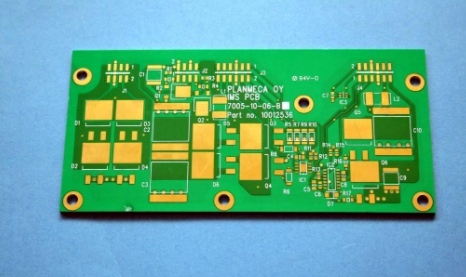PCB design skills FAQ
Q:
From your personal point of view, what is the current PCB design for analog circuits (microwave, high frequency, low frequency), digital circuits (microwave, high frequency, low frequency), analog and digital hybrid circuits (microwave, high frequency, low frequency) Does this EDA tool have a better cost-performance ratio (including simulation)? Can you explain separately.

A:
Limited to the understanding of my application, I cannot compare the performance and price ratio of EDA tools in depth. The choice of software should be based on the scope of application. The principle I advocate is that it is enough. For conventional circuit design, INNOVEDA's PADS is very good, and there is a matching simulation software, and this type of design often occupies 70% of the applications. When doing high-speed circuit design, analog and digital hybrid circuits, the solution using Cadence should be a software with relatively good performance and price. Of course, the performance of Mentor is still very good, especially its design flow management should be the best.
The above views are purely personal views!
Q:
When there are both RF small signals and high-speed clock signals in a system, we usually adopt a digital/analog separation layout to reduce electromagnetic interference through physical isolation, filtering, etc., but this is important for miniaturization, high integration, and structure reduction. The processing cost is of course unfavorable, and the effect is still not satisfactory, because whether it is a digital ground or an analog ground point, it will eventually be connected to the chassis ground, so that the interference is coupled to the front end through the ground. This is a very headache for us. I would like to ask experts about measures in this regard.
A:
The situation of both RF small signal and high-speed clock signal is more complicated, and the cause of interference needs to be carefully analyzed, and different methods should be tried accordingly. According to the specific application, you can try the following methods.
0: When there is a small RF signal and a high-speed clock signal, the power supply must be separated first. Switching power supply is not suitable, and linear power supply can be used.
1: Choose one of RF small signal and high-speed clock signal, and use shielded cable for connection, which should be ok.
2: Connect the digital ground point to the ground of the power supply (requires good isolation of the power supply), and connect the analog ground point to the chassis ground.
3: Try to use filtering to remove interference.
Q:
If EMC is considered in circuit board design, it will definitely increase a lot of costs. How can I answer the EMC requirements as much as possible without putting too much cost pressure? thanks.
A:
In practical applications, only relying on the printed board design cannot solve the problem fundamentally, but we can improve it through the printed board: reasonable device layout, mainly the placement of inductive devices, and the shortest possible wiring connection., And at the same time reasonable ground distribution, if possible, connect the Chassis ground of all devices on the board with a special layer, and design special joints that are tightly connected to the equipment shell. When choosing a device, it should be low instead of high, and use the principle of slow instead of fast.
The above is the introduction of PCB design skills FAQ. Ipcb is also provided to PCB manufacturers and PCB manufacturing technology.